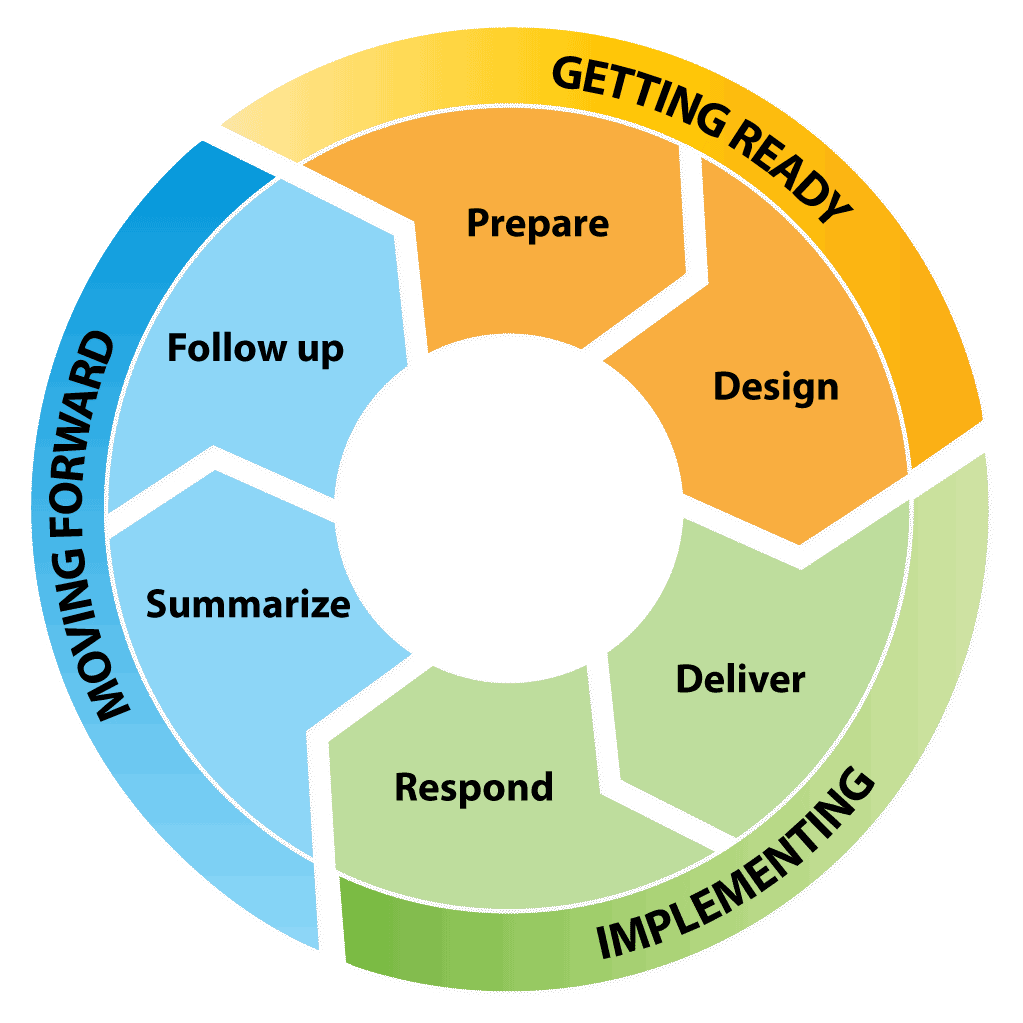Talking Straight
Helping Others to Handle “Bad News”
Program Description
We often worry about conversations where we have to deliver some tough news that others will perceive as bad news. It might involve an impending organizational change, performance issue, a career transition or perhaps limited growth opportunities. In reality, most bad news is not news; the rumor mill in organizations works very efficiently; the person has most likely sensed something is going on. However, until people are confronted by the direct impact of the news for themselves, they may believe that exceptions will be made, or that there is still time to stop or reverse it.
Although it may seem uncomfortable to the messenger, it’s necessary for most of us to first experience the bad part of the news before we can move to acceptance and possibly see the part that might be beneficial. As messengers of the difficult communication, we may wish to manage the negative reaction as quickly as possible and move on to the positive, thus tending to ignore or deny the other’s feelings of fear, loss, and/or sadness. We may sugarcoat and soften the message or even exaggerate the effect.
Talking Straight means giving people straightforward and accurate information with empathy, but also with the expectation that they are adults who can handle it. Straight talk is respectful of the other person and provides the other person with important information. It is realistic and supportive at the same time, facilitating the other in taking action. In this session, we focus on the skills for delivering difficult information and on responding to the receiver in a constructive way. We practice a process for helping others hear, deal with, and respond to information that they may perceive negatively.
Talking Straight is available virtually. For more info, see our page on Virtual Learning Journeys.
For more information on Talking Straight™, click here.
Talking Straight™ is a copyrighted program of Barnes & Conti Associates, Inc.
Program Objectives
As a participant, you will be able to:
- Deepen your knowledge about typical responses to difficult news.
- Build confidence by practicing a process for conducting challenging conversations about the impact of change, loss or delay of a career opportunity, or performance issues.
- Apply learning to a real upcoming scenario that will involve a difficult conversation.
- Describe and manage your own and others’ resistance to change.

What our clients say:
“The course covered a very practical topic that can be applied to our daily lives. It provided a quick and easy way to acquire a skill that may not be easy for us. It also provided simple tools to fall back on when one has to have a ‘straight talk.’”
—Health Care Professional

“The material was presented in a clear and easy format to follow; there was plenty of time for discussion about each topic. Other strengths of the course were the ability to practice, course handouts to review, and the practicality of the content which was very applicable to some of the challenges we face. I intend to review the format/process before having challenging conversations; practice listening... listening....listening for opportunities to provide feedback (so that I can put this into practice), and remind myself that being direct is being kind and remembering to always be empathetic (keeping this context) while practicing talking straight.”
—Health Care Professional
About Barnes & ContiNewsPublic ProgramsEvents |
Programs & ServicesInfluence & Communication
Innovation &
Decision-Making & Problem Solving Leadership
Internal Consulting Change Management |
Resources
Apps for Mobile Devices |
Follow Us!ContactBarnes & Conti Blog
|
